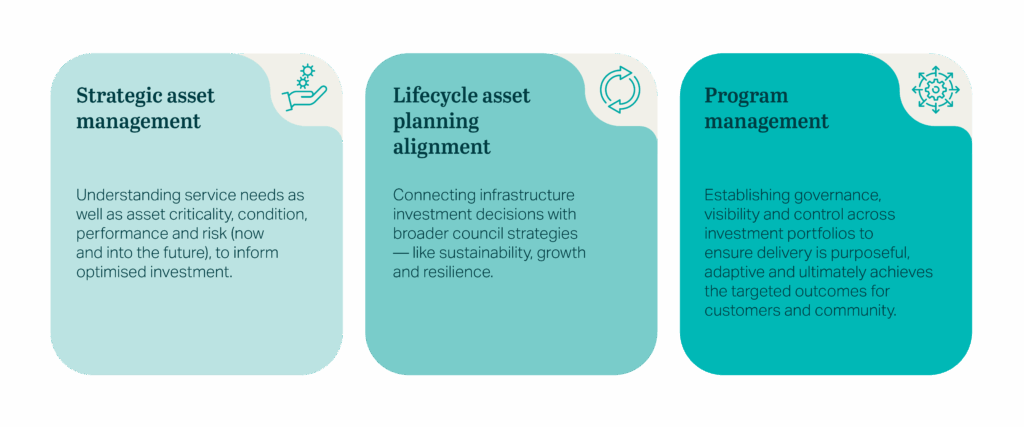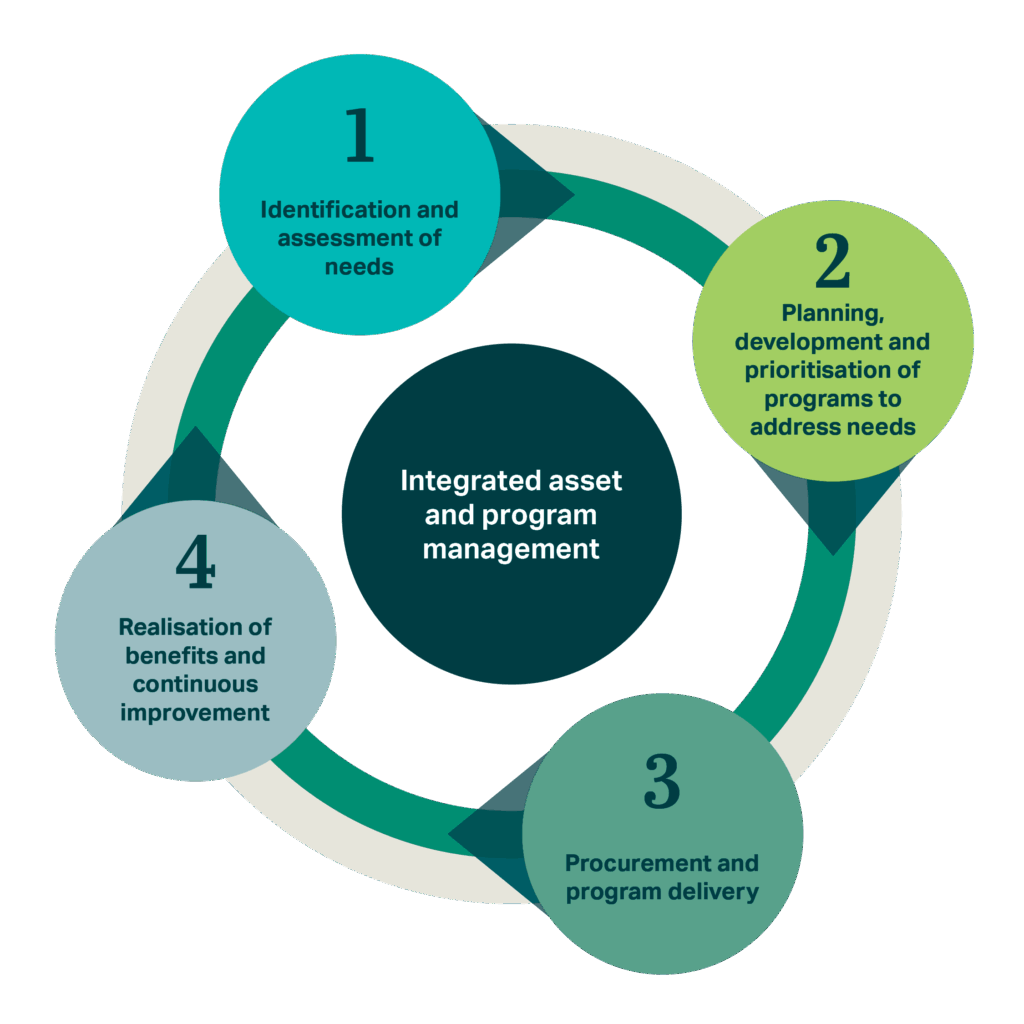Breaking down silos to strategy: How councils can optimise lifecycle asset planning and delivery
For infrastructure executives and asset managers who are seeking to align infrastructure investment with strategic goals under increasing pressures, this article provides a justification for a programmatic approach to lifecycle asset management.
As reported in annual reports and corporate plans, councils face a complex blend of challenges:
- Ageing assets with rising maintenance and renewal costs that require significant upgrades, under constrained budgets.
- Increased demand and extreme weather events.
- Important reporting requirements to regulators.
- Expectations to leverage digital tools and data to make dynamic, evidence-based decisions, requiring the right skills and technology solutions.
- Pressure to meet the evolving expectations of both government and community, balancing the needs of current and future customers and users.
- Different and changing regulator priorities.
- Difficulty articulating the business case for sustainable investment in the lifecycle management of assets, and securing adequate funding that customers and the community understand and support.
We have worked with coastal councils across New South Wales and Queensland who are facing similar challenges. We’ve partnered to foster an integrated asset management approach, where lifecycle asset planning and program delivery are not activities delivered independently. Rather, they are part of a unified approach to deliver better value through optimising asset performance and costs while mitigating risks.

Integrating asset and program management
While an understanding of the value of this integrated approach is growing, councils can face barriers to adopting it fully.
Assets are often managed through separate systems and processes, making it difficult to align long-term planning and asset risk management with day-to-day project delivery and operations. Typically, asset intervention planning is done through a bottom-up approach, where the purpose of projects is to reactively mitigate identified risks. Essentially, when an asset is failing, or is very likely to fail, a project is set up for short-term intervention.
The often-resulting challenge is that individual projects do not connect well with strategic objectives to enable their achievements. This approach also doesn’t allow for organisational oversight across the full asset lifecycle, or demonstrate how these projects achieve the desired levels of services. A way to address this? By implementing a programmatic approach to lifecycle asset management and investment.
To paint the picture, rather than replacing an ageing asset or one in poor condition, organisations can develop asset health risk-based monitoring programs, using tailored inspection techniques and technologies (for example, destructive or non-destructive testing sensors or drones). This monitoring can provide information to help optimise maintenance and renewal planning.
In turn, these activities can be planned for, delivered and monitored through tailored programs that allow the organisation to report and demonstrate cost, risk and service outcomes.
In our work alongside councils, we’ve begun to develop and implement integrated models that bring together:

Our close relationships with councils are enabling an understanding and embracing of the integrated nature of asset management. By bringing together strategic, tactical and operational lifecycle planning with delivery teams using a programmatic approach, we can help tackle complex challenges collaboratively and build internal capability.

What are the key benefits to this integrated approach?
The benefits of this integrated approach are tangible:
- Improved organisational oversight and decision-making: Councils gain clearer visibility of asset, resource and supply chain needs, risks and trade-offs. Councils can then justify limited capital expenditure with greater confidence, while assuring stakeholders that service levels will be maintained or improved. They can also better balance proactive and reactive interventions, where they prioritise the program’s financial and human resources to address identified risks appropriately, at the right time.
- Better value for money: Securing funding for a program of asset interventions, rather than individual projects, allows councils to do more for their organisation and community with the same amount. Councils can also make better use of budgets due to identifying risks earlier and addressing them before they are realised (for example, before service impact of asset failure). Every dollar spent can be invested in the right projects and programs, those that deliver the greatest impact for the community they serve and the council delivering the service.
- Efficiency and transparency: Integrated asset and program management reduces duplication, streamlines delivery and improves accountability. Contractors can be utilised across the entire program, rather than ad hoc on different projects, leading to better collaboration, trust and long-term partnerships.
- Community outcomes: Infrastructure is delivered not just effectively and efficiently, but the community gets better value for their money and a better quality of service. Communities benefit from more reliable services, reduced disruption and greater transparency on how public funds are used.
Embedded collaboration within councils
We bring the mindset, people, tools and experience to help councils navigate complexity, build capability, and reach the right asset management maturity through a collaborative, embedded model. As an embedded partner, we are committed to achieving councils’ goals and to supporting them to deliver valued services.
This model fosters trust and shared ownership of goals and outcomes. It allows us to design solutions that reflect councils’ and regulators’ priorities, community expectations and operational realities.
Looking forward
As councils continue to navigate challenges, integrated thinking, breaking down silos, embracing collaboration and improving risk oversight and management will be key to delivering valued services to customers and communities.






